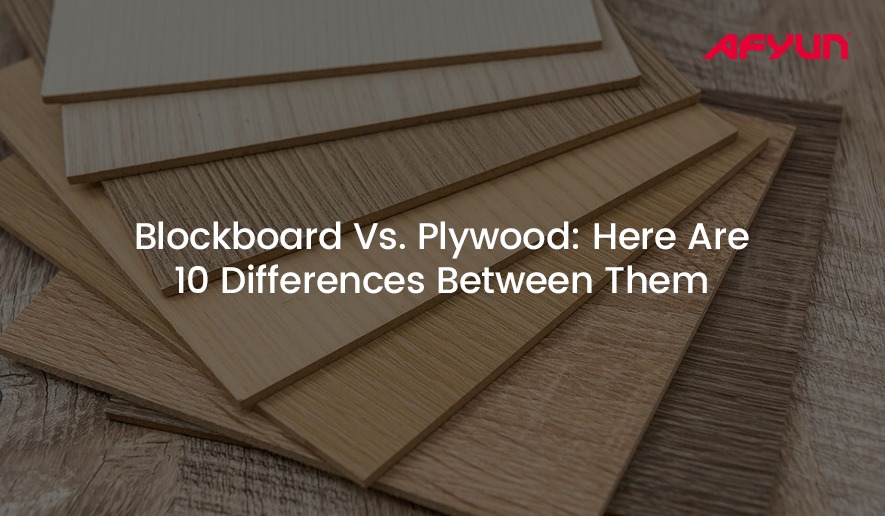Without students, a classroom is not a classroom. Without players, a playground isn’t a playground. Similarly, a home is not a home without furniture, right?
You surely need furniture to complete your home. But, the materials you choose play a vital role in deciding its efficiency.
Plywood and blockboard are two of the common materials for furniture, but which one do you choose? How do they differ?
At first glance, they’d look like twins, but they are different between blockboard and plywood.
And here, we are going to dive deeper into their differences so that you can make an informed decision.
Let’s Compare Blockboard Vs. Plywood
| Aspect | Blockboard | Plywood |
|---|---|---|
| Materials | It comes with hardwood veneer layers on the outer top and bottom. In between them, low-density softwood blocks take their place. | It comes with thin wood veneer layers attached together using glue. Each layer is glued in the alternative direction, making their grain rotated up to 90 degrees to each other. This gives them exceptional strength and stability. |
| Manufacturing Process | It’s manufactured by glueing softwood blocks together which is then enclosed with veneer sheets. | It’s manufactured by glueing sheets of wood veneers together in the alternative grain direction. As said before, this gives plywood superior strength. |
| Features | It has a smooth surface for finishing, excellent screw-holding capacity, is less prone to split and is perfect for complex carvings. | It comes in various grades and qualities for different applications. It has high impact resistance, and has excellent bendability and curvability. Some of it’s grades are great for exterior as well. |
| Uses / Applications | Ideal for indoor furniture like shelves, doors, cabinets, and wardrobes. However, we don’t recommend it for exterior applications without proper sealing. | Suitable for both indoor and outdoor applications like roofing, flooring, wall sheathing, making cabinets, furniture, and boat construction. |
| Water and Moisture Resistance | Primarily an indoor material, it’s not completely moisture-resistant. You have to properly seal and finish it to protect it from humidity and moisture. | Some of its grades can withstand exposure to moisture. Marine-grade plywood, for instance, is specifically engineered for water-prone areas. |
| Strength & Durability | It is strong and durable, but its load-bearing capacity is comparatively slightly lower. It could be your perfect choice for applications where strength is not the primary requirement. | It is renowned for its exceptional strength and durability. It can support heavy loads and is commonly used in structural applications. |
| Sound Insulation | It offers decent sound insulation properties. | Its dense composition provides better sound insulation compared to blockboard. |
| Ease of Handling | It is relatively lighter, making it easier to handle and transport. This can help you during the construction process. | It’s heavier relatively but it offers superior strength, which may be necessary for certain structural applications. |
| Sizes | It’s available in standard sizes and can also be customized based on specific project requirements. | It comes in a wide range of sizes, catering to various construction needs. |
Blockboard Vs. Plywood: The Bottom Line
Tada! That was the Blockboard Vs. Plywood comparison game.
So, blockboard and plywood have different features. They are suitable for different applications. If you are choosing one, you need to understand your requirements initially.
You can opt blockboard for indoor furniture like doors. If you require your furniture to bear weight, resist water and last long, then you might want to consider going for plywood. We suggest consulting with an expert builder first before you decide.








